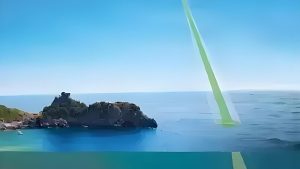In recent years, LiDAR (Light Detection and Ranging) technology has emerged as a transformative tool in maritime applications. By utilizing laser pulses to measure distances, LiDAR systems can create detailed, three-dimensional representations of both above and below the water surface. This article aims to provide a comprehensive overview of LiDAR technology and its specific applications in maritime settings.

How LiDAR Works
LiDAR systems emit laser pulses from a sensor mounted on a vessel. These pulses travel until they hit an object—such as the ocean surface, seabed, or marine structures—then reflect back to the sensor. By measuring the time it takes for the light to return, the system calculates distances with high precision. This data can then be processed to create accurate topographical maps, revealing underwater features that are often difficult to survey using traditional methods.
Key Advantages of LiDAR in Maritime Environments
- High Precision and Accuracy: LiDAR can provide centimeter-level accuracy, which is crucial for safe navigation and detailed mapping of underwater landscapes.
- Rapid Data Collection: Unlike conventional hydrographic surveys, which can be time-consuming, LiDAR systems can cover large areas quickly, making them ideal for expansive maritime regions.
- Versatility: LiDAR can be used in various environments, from coastal zones to deep-sea applications, making it a flexible tool for different maritime needs.
Applications in Maritime Settings
- Hydrographic Surveying: LiDAR technology is increasingly used for hydrographic surveys, helping to create detailed maps of underwater terrain. This is vital for navigation safety, as it allows for the identification of potential hazards such as rocks, wrecks, and shallow areas.
- Coastal Management: LiDAR is instrumental in monitoring coastal changes over time. By providing detailed data on shoreline erosion, sediment deposition, and habitat changes, it supports effective coastal management and environmental protection efforts.
- Marine Habitat Mapping: LiDAR can help map complex underwater habitats, including coral reefs and seagrass beds. This information is essential for conservation efforts and understanding marine biodiversity.
- Search and Rescue Operations: In emergency situations, LiDAR-equipped vessels can enhance situational awareness and improve the efficiency of search and rescue missions, making it easier to locate distressed vessels or individuals at sea.
Conclusion
LiDAR technology is rapidly changing the landscape of maritime applications, providing valuable data that enhances safety, efficiency, and environmental stewardship. As this technology continues to evolve, its integration with other systems, such as GIS and machine learning, promises even greater advancements in our understanding and management of maritime environments.


